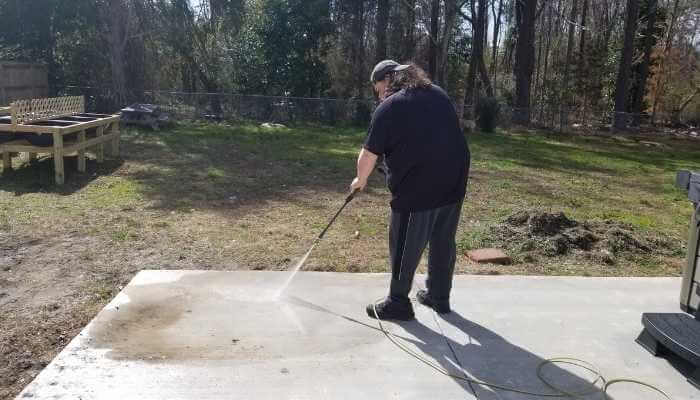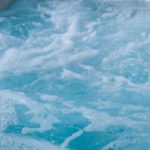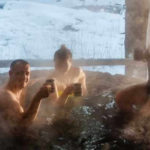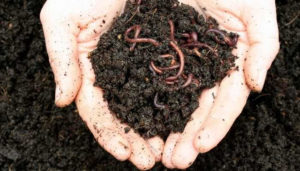
We all just want to jump in to relax our weary muscles and stop thinking about our stresses. But, before we can enjoy our hot tub, we need to make sure it’s been placed on an appropriate base.
A hot tub must be placed on a stable, level surface that can support its weight and not become problematic due to moisture. The most common bases include concrete, gravel, wooden decks, paver patios, and spa pads. You need to decide which material is best for your situation.
Now, let’s get a no-nonsense overview of each of these bases, and then you pick out what’s best for your hot tub.
Some Things to Keep In Mind About Hot Tub Bases
Before you install anything, you need to be sure of the weight that this hot tub will be. That’s not the same as the weight in the store! The hot tub will be filled with water – AND people. That’s a lot of weight. Your base has to be able to support that.
Speaking of water, there will probably always be incidental overflow when people get in and out of your hot tub, so consider drainage issues before placing it.
You also need to take into consideration the access you need to the hot tub. It has to be delivered, and have a power supply. You need to be able to conveniently get to the inner works (usually beneath), the controls, and be able to easily remove the cover and put it back in place.
If you’re building something brand new, be sure you have the right permits or you hire a licensed and insured professional.
Do Concrete Patios Make Good Hot Tub Bases?
It’s a permanent fixture – and you can’t move it somewhere else. Which for most people is fine. My experience with moving is, that every time you move something like a hot tub, you’re also risking it. Will you scratch it? Will you rattle something loose on the inside? So, to be honest, once it’s settled, I don’t plan on moving it anyway. But if you rent and you shouldn’t be making drastic changes to your property, this may be an issue.
Some people don’t like it because a concrete patio is not very attractive. Well, I don’t plan to be seeing what’s under the hot tub, Marsha. And if I don’t like the look of the concrete, I have options. There are rugs available, there are interlocking floor tiles (I like teak), or if I wanted to really go wild, I could stain the concrete. There are always design options available.
Also, concrete can crack over time, especially if something heavy is placed on it. So, be aware of that possibility. In order to hold a hot tub, the concrete should be at least 4 inches thick and should have been allowed to cure for at least 28 days. That way, cracking due to the weight placed on it is less likely.
How Do Pavers Stack Up As Hot Tub Bases?
Using pavers for a hot tub is possible, but you’ll need to be sure they are level and not angled. To be honest, most paver patios will have a slant for drainage. This needs to be taken into consideration. Also, you’ll need to find pavers that are at least 2 inches thick, but that’s pretty easy.
Just remember that pavers may sink during the cycles of freezing and thawing as weather changes in certain climates. That’s not going to be good for your hot tub, so for a paver base, you’ll need layers of other materials, first. There’s the 6 inches of gravel, the 1 inch of sand, the pavers, and then you’ll need to go back and add more sand for joining. The full process is pretty involved and a lot more time-consuming and usually more costly than a concrete slab.
Something else that might help with this shifting that can occur with pavers is to not use stone. Instead, you can find interlocking concrete pavers that fit more snugly with less give. As always, if you want to protect your investments, get a professional to inspect the patio and make sure it and the hot tub are perfectly balanced.
Usually, the point of installing a paver patio is to enjoy the aesthetically pleasing designs that are possible. But you plan on putting a hot tub on top of it. It’s not like anyone is going to see the pretty design you’ve made with the pavers if it’s underneath the hot tub. So consider this, when you look at the expense you’re about to go to for a hot tub pad.
If you do it yourself and you don’t worry about the aesthetic, pavers could end up being a good deal. They hold up as well as concrete and they have a low absorption rate compared. They’re easy to replace if anything goes wrong and you don’t have to wait 28 days for them to cure before moving your hot tub onto them.
As far as permanence is concerned, paver patios are considered permanent projects by most permitting agencies. If you rent and you shouldn’t be making drastic changes to your property, this may be an issue. Check with the landlord before doing this.
Are Synthetic Spa Pads The Best Choice For Hot Tub Bases?
Now if you do want portability and you don’t mind the look of molded plastic, there are synthetic spa pads available. EX Pad and Handi Pad are two brands. They offer interlocking squares of thick, molded plastic. It costs just a little more than concrete, but not as much as pavers.
If your hot tub doesn’t fit exactly on the pad, you’ll have to see the molded plastic and that might not be pleasing with your aesthetic, but you can always find design solutions for this.
Previous users and the manufacturers claim that they hold up better than concrete? Not sure about that. Especially since one of the warnings is that if you don’t have perfectly flat, level ground to place these things on, they can warp and won’t support the hot tub properly.
But, if you rent your space and want a hot tub, this might be the way to go, because it’s modular. You can remove it when you leave and there’s no permanent damage to the property.
Why Is Gravel Considered A Good Hot Tube Base?
The cheapest base I’ve found so far is gravel. Plus, it’s easy to install and is great for drainage. You just need an appropriate frame for holding the gravel, pour and spread at least 4 inches of the stuff inside, and tamp it down until it’s relatively solid.
You should use crushed stone and not the smoother pea-gravel or river stone for this project. The smooth stone gravel will not lock into place to be a solid base. Crushed stone will. it’s not visually appealing, but again, there are design methods to hide the base.
Is Wood Decking Still Considered A Good Base For Hot Tubs?
Decking is more expensive, and you’ll need a structural engineer to be sure the weight of the hot tub can even be supported by a deck. If it’s an already-in-place deck, reinforcements may need to be made. If this professional is brought in for the construction phase, they can provide insight into the proper materials and designs that will allow for the weight of a filled hot tub.
The main thing to be careful of when it comes to decking (once you’ve been sure it can support the hot tub) is moisture. If you have anything made of wood, supporting something this heavy that is often the source of splashing water – rot is something to constantly be on the lookout for. Definitely be sure to treat, stain, and/or paint your wood to protect it as much as possible.
And remember, adding a deck or reinforcing one that’s already there is considered a permanent structure. If you rent and you shouldn’t be making drastic changes to your property, this may be an issue.
Do All Of These Bases Work With Inflatable Hot Tubs?
All of these types of bases will work with an inflatable hot tub. The only difference is that an inflatable hot tub is not permanent so you don’t have to worry about fixing it to anything. You could even place it on the grass in the yard. Just make sure that the surface is flat.
Also, inflatable hot tubs lose heat quicker than other hot tubs – they don’t have as much insulation. So, you may want to invest in a thermal spa pad to put down like a layer of protection, and also as a method of minimizing heat loss.
My suggestion for an affordable hot tub (spa) pad is the CosySpa Hot Tub Flooring Protector.
Final Thoughts
Even when you do your best to get everything right for your base, there can be discrepancies that throw off everything. Maybe a paver sinks a bit, maybe the concrete is uneven on one side, maybe there was more of a slope than you initially realized. You can always go back and redo things, or just use shims. You can also add more materials to accomplish a level hot tub.
So, don’t throw your hands up in the air just because you’ve got yourself into a challenge. Solve the problem and then decorate with the aesthetic you like and begin enjoying your hot tub, no matter which base you actually choose.













